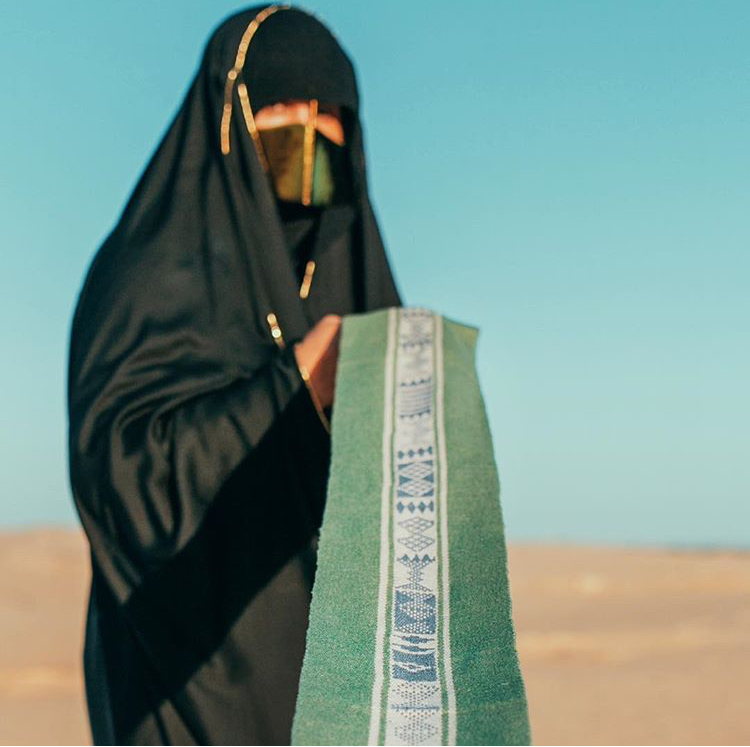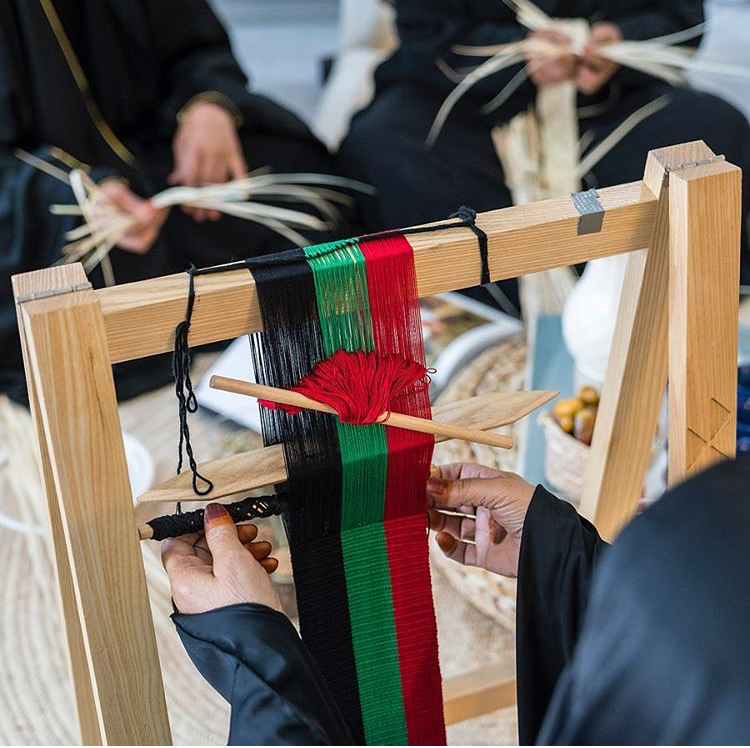A traditional Emirati craft, Al-Sadu, is threatened by extinction.

Walking into a traditional Bedouin majlis, one would find the furniture decorated in primary colors of red, with stripes of white and black in the middle. The eye travels to find the triangular, or diamond-shaped motifs shifting in and out of focus, yet still there in view. It’s a wonder that nomadic people would choose this reigning color to be housed in their tents, and as a child I assumed it was only a matter of taste.
However, it came to my attention while reading an article on Atharna recently that the minimal range of colors were necessary due to the shortage of resources needed to create this type of traditional weaving, “Al-Sadu”. Woven from goat and camel hair, this Bedouin craft was mainly used by women from Nomadic communities to create tents, saddles, belts, and carpets. In the context of a Bedouin lifestyle in the Arabian Gulf countries and Syria, Jordan, and Iraq; tribes exchanged techniques concerning their craft, eventually creating a way to maintain and renew those traditional crafts.
During their seasonal treks, the Bedouins wrapped their belongings in camel trappings, which had tassels or tree patterns sewn onto the sides or the center of Sadu piece. The importance of these symbols was due to a depiction it offered into a nomadic life, the tribes, and feminine aesthetic. Hand-woven into the textile are geometrical shapes by master weavers who more than often left a signature called “wasm”. At the heart of this craft is the camel. Not only did camels provide food and shelter, but also an inspiration for the tribal women who wove them onto their pieces. The repetition on the camel trappings mirrored the slow rhythm of the animal. While the symbols woven into Al-Sadu depicted animals like the snake or scorpion, they do not overshadow another outstanding quality, which is symmetry.
Traditionally, the process of extracting the yarn from a camel, sheep, or goat initially requires cutting. The next step is sorting according to color, cleaning and combing through the hair before spinning it into yarn on the spindle. Natural materials were used to color the yarn such as henna, saffron, turmeric, and the camel’s urine to achieve the desired color. A minimal palette reflected the environment of the weavers. In modern times, the yarn would supposedly be woven onto a wooden loom; albeit before the loom would be made of palm or jujube wood. Depending on the desired symbols, the layers of yarns would be interwoven in the middle of the loom but separated at the top and bottom.
Last November I signed up for an Al-Sadu workshop held by Al-Ghadeer UAE Crafts during Dubai Design Week 2018. The Abu-Dhabi based organization enables underprivileged Emirati women through selling their traditionally crafted products. The workshop lasted a grueling three hours, and while I learned to weave a bracelet I realized the craft required a certain amount of focus and patience. One mistake during the weaving can mean having to start the process from scratch.

Fatima Al-Mansouri, a representative of the organization, emphasizes that weaving symbols such as a tree prove to be a challenge even for modern Al-Sadu weavers. “Despite that, as a whole, we’re trying to maintain this craft by creating products like accessories or decor,” she says.
Since 2011, Al-Sadu was registered as an endangered Emirati craft in the UNESCO “List of Intangible Cultural Heritage in Need of Urgent Safeguarding”. This fact alone calls for a need to revive the craft in classrooms and at home, for the sake of maintaining our traditional roots.
References:
https://ich.unesco.org/en/USL/al-sadu-traditional-weaving-skills-in-the-united-arab-emirates-00517
https://abudhabiculture.ae/en/unesco/intangible-cultural-heritage/al-sadu-unesco
http://www.alghadeeruaecrafts.ae/en/
Al Khazi, M. (2016). An explanatory study of Kuwaiti youths’ knowledge of Sadu Heritage: Their appreciation of Sadu and its contemporary expression in textile. University of Southampton, 17-49.
Canavan, K., & Alnajadah, A. (2013). Material Symbols of Traditional Bedouin Al-Sadu Weavings of Kuwait. Textile, 11(2), 152-165. doi: 10.25272/175183513×13710294193961



